This time I'll tell you how to make a delicious, traditional Danish rye bread / Rugbrød. But first of all some general information about Danish food and breakfast.
Jump to RecipeDanish Cuisine
Danish cuisine is rich in bread and baking specialties and offers a variety of dairy products. The traditional main courses are dominated by fish and meat dishes.
Probably one of the most famous achievements of Danish cuisine is Smörrebröd/Smørrebrødthat can be compared to our sandwiches. Smörrebröd / Smørrebrød comes from the word smör / smør (Danish: butter) and bröd / brød (Danish: bread). The basis is a slice of bread (usually Rye bread, which is spread with butter and then topped with all sorts of delicious things (e.g. roast beef, scrambled eggs, cheese, herring, crabs, etc.) and then artfully garnished (e.g. fresh vegetable sticks, egg slices, pickled cucumber, tartar sauce, freshly grated horseradish and herbs). There are no limits to the imagination, even though I personally prefer the delicious bread with nothing more than salted butter. Smörrebröd/Smørrebrød is so rich that it is usually served as a lunchtime meal.
Breakfast in Denmark
A typical danisch breakfast doesn't go without Bread/rolls.The bakeries in Denmark offer many different types of bread/rolls: E.g. simple white rolls sprinkled with poppy seeds (rundstykker), soft sweet or savory rolls (bolle). Tebirkes are croissants that are sprinkled with poppy seeds and sometimes also filled with sugar beet syrup. Croissants sprinkled with sesame seeds and linseed are called grovbirkes. White bread ((franskbrød). At the weekend, many danish love a Danish pastry (Wienerbrød). Just as good as white bread, if not much better, tastes danish rye bread ( Roggenbrot (Rugbrød)). But more on that in a moment!
People take salted butter (e.g. from Lurpak) and not the Kærgarden margarine mixture (!).
Jam from Den Gamle Fabrik can also be found in German supermarkets, although it probably tastes better in Denmark! Pålægschokolade, which can be compared with our Eszet-Slices is not only a popular topping for children's breakfast.
Danes love cheese (Danish: ost)! Popular types of cheese are e.g. Danbo, Havarti, Esrom, Danablu as well as Buko cream cheesewhich also very well known in Germany. Buko cream cheese is available in all imaginable flavors, as e.g. with crabs (rejeost), ham (skinkeost) or mushroom pieces (champignonost).
Sausage- and meat lovers probably choose Leverpostej, a coarse, fairly firm pie, which is refined with spices and herbs. They may also like the milder Skinkepostej. Salami means: Spegepølse.
In Denmark, people like to eat for breakfast also yogurt, which can be bought in various flavors. Also very popular are Sour milk products without additional flavors. They taste particularly good with ymerdrys, a mixture of grated wholemeal bread and fine brown sugar (farin). You can buy Ymerdrys cready-made in the supermarket.
Rye bread/Rugbrød
But now, back to the bread. The typical danish Rye bread/Rugbrød is a dark, heavy bread in the shape of a box. It consists mainly of rye flour and rye meal. Sourdough is used for rising up . The bread gets its dark color by adding sugar beet syrup. Depending on your taste, you can add various seeds (e.g. sunflower, pumpkin seeds, linseed) to the dough. Grated carrots make the bread particularly moist. Rye bread is high in fiber and rich in nutrients so that it is very healthy.
As Rye bread/Rugbrød is probably the best-known and most popular of all Danish breads and is good for any topping, whether sweet, salty, savory or spicy:
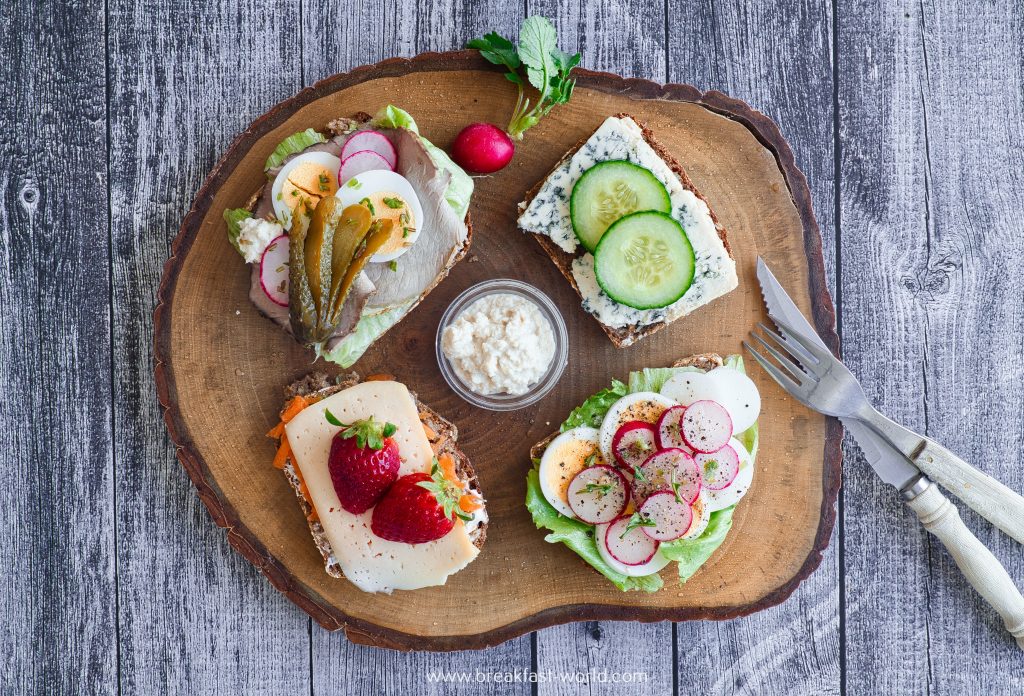
I have selected a yummi recipe for Rye bread for you.
The bread is pretty easy to make. However, you need a little patience, as it takes a while until the bread is ready due to the long rising time. This is especially true if you want to prepare the Sourdough by yourself before. But I promise you, the waiting period is worth it!
Assuming you want to save time, you can use the ready-made sourdough mixture that you can buy in (organic) supermarkets or bakeries. If so, you can safely skip the following section.
Jump to RecipeSourdough
For a long time I did not dare to use sourdough because I always believed that both the production of the sourdough base and the baking of a sourdough bread are very complicated. Thanks to the Corona related lockdown, I finally took my time and was taught better. Preparing sourdough yourself is child's play. You practically can't go wrong. However, it takes several days before the basis is ready. And that's how it works:
- Day 1: Mix 50 g wholemeal rye flour and 50 ml water in a bowl and leave it covered for at least 24 hours at room temperature.
- Day 2: Add 50 g wholemeal rye flour and 50 ml water to the mixture from day 1, stir well again and leave it covered at room temperature.
- 3rd day: Add 50 g wholemeal rye flour and 50 ml water to the mixture from the 2nd day, stir well again and leave it covered at room temperature.
- 4th day: Add 50 g wholemeal rye flour and 50 ml water to the mixture from the 3rd day, stir again well and leave it covered at room temperature.
- Day 5: Baking according to recipe.
Usually you don't need the whole base for one recipe. You can put the leftover into a screw-top jar and place it in the refrigerator until the next baking process.
Before you use the sourdough again you need to "feed" it. Doing so add approximately 50 ml water and 50 gr rye flour to the dough, mix well and leave it for several hours at room temperature until bubbles have formed.
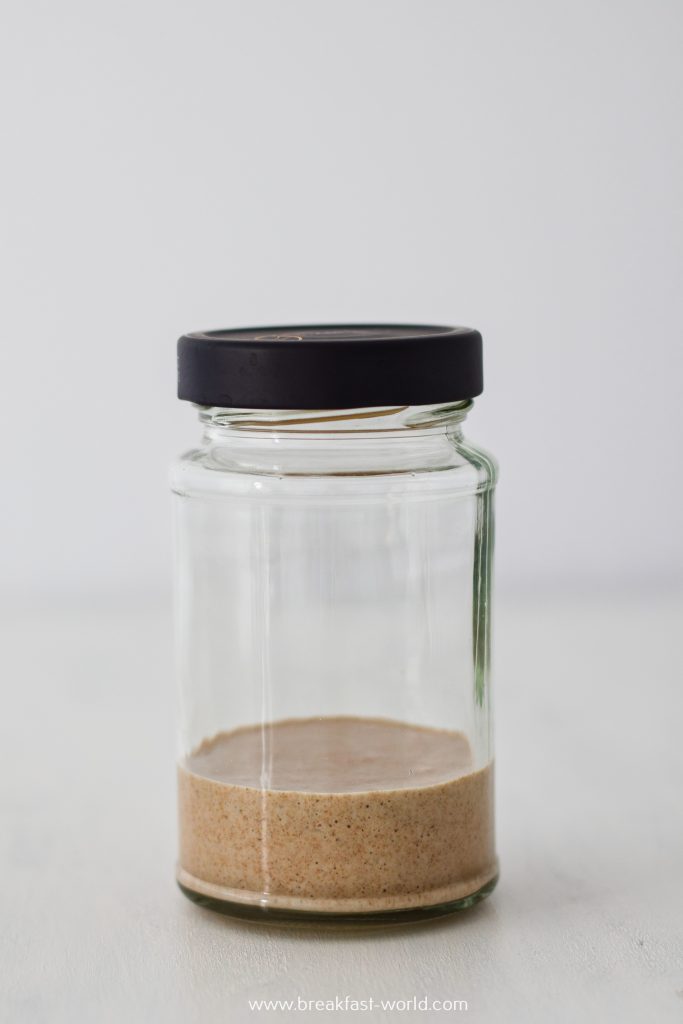
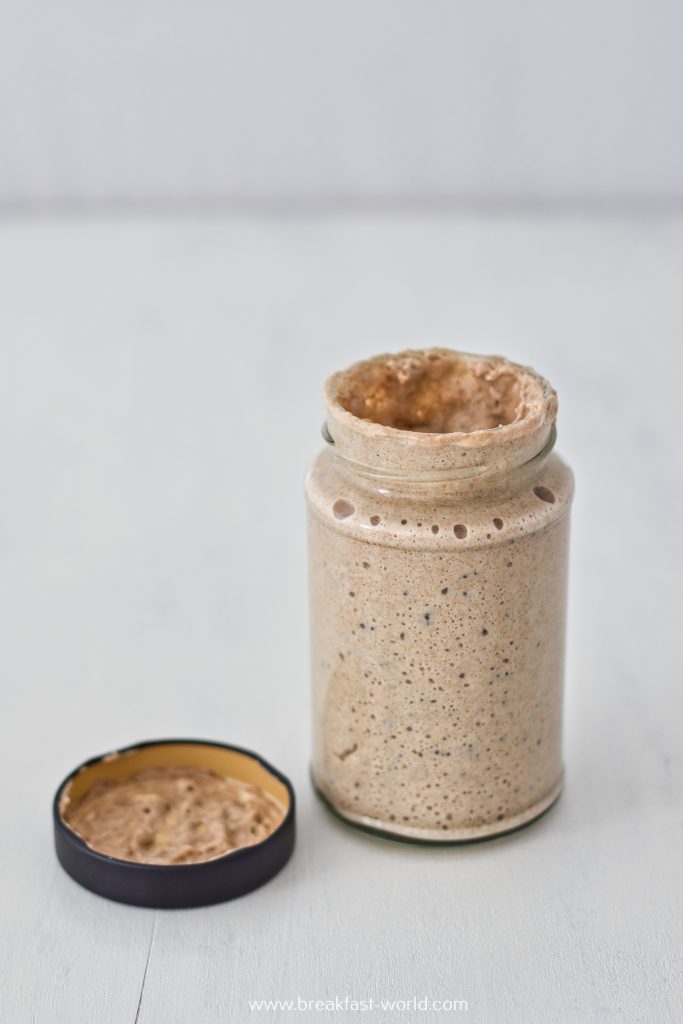
Then the sourdough is active again and can be used for baking. This way, you can keep the sourdough for a long time in the refrigerator You should make sure that the glass is very clean and you only work with cleaned cutlery to prevent mold growth.
Well, enough theory. No, it's your turn:
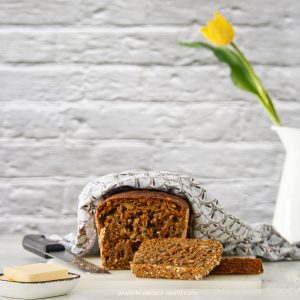
Rugbrød
Ingredients
- 2 baking pan in box shape (lenght: 30 cm)
- 60 gr Sourdough
- 690 ml water lukewarm
- 20 gr salt
- 30 gr sugger beet syrup
- 375 gr Rye flour (Typ: 1150)
- 375 gr Finely ground rye meal
- 100 ml Beer
- 150 gr wheat flour
- 50 gr Sunflower seeds
- 50 gr Pumpkin seeds
- 30 gr linseed
- 80 gr freshly grated carrot
- Butter for greasing
- Oat flakes to sprinkle on the baking pan
Instructions
- The day before:For the danish Rye bread cover the sunflower seeds, pumpkin seeds and linseeds in a bowl with cold water and soak overnight.For the pre-dough, mix sourdough, water, salt, sugar beet syrup, rye flour (type 1150) and rye meal thoroughly in a bowl. Cover the bowl with cling film and leave to rise overnight at room temperature.
- Baking day: Drain sunflower -, pumpkin- and linseeds well in a colander.For the main dough, add beer and wheat flour to the pre-dough and mix everything thoroughly. Work in the grain mixture and freshly grated carrots. Grease baking pans with butter and sprinkle with oat flakes. Put the dough evenly on both forms and sprinkle on top oat flakes if desired. Cover the baking pans and let the dough rise at room temperature for about 90 minutes.Preheat the oven to 230 ° C top/bottom heat and place an ovenproof baking dish on the bottom of the oven.Place the loaf tins in the preheated oven and pour boiling water into the baking dish to create steam. Immediately close the oven door. Bake for about 60 minutes, reduce the temperature to 190 ° C after 10 minutes.Remove the loaves and let them cool down on a cooling rack.
Notes
Did you like this post?
I look forward to your rating (star bar) or a nice comment.
Perhaps you would also like to subscribe to my page. If so you will be regularly informed about new posts.
Thanks a lot!
Sources: recipe, Danish cuisine in general, Breakfast in Denmark

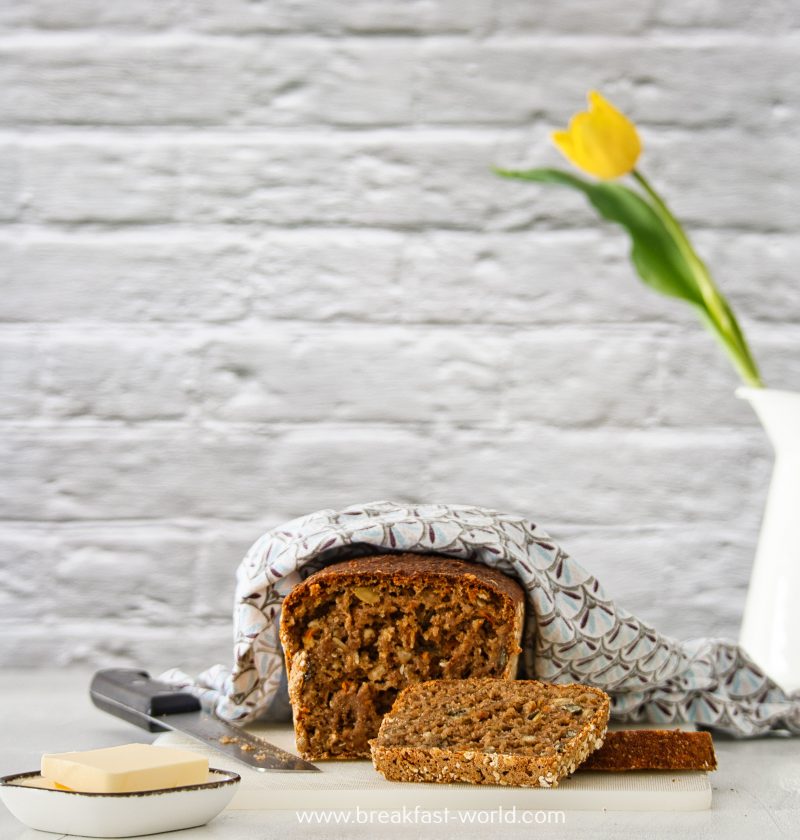




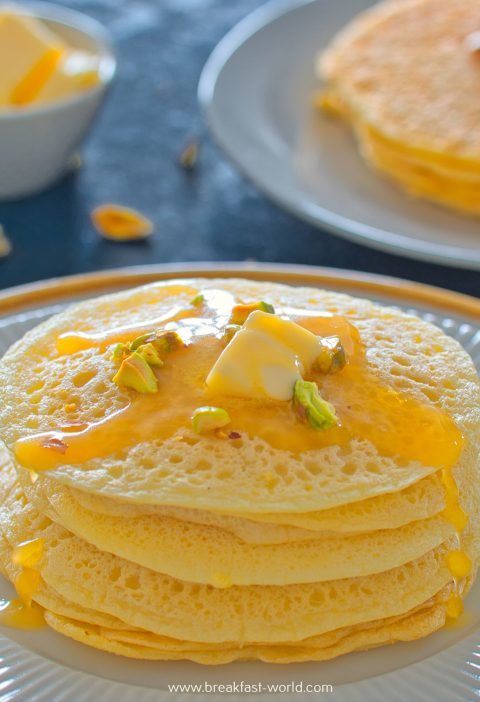
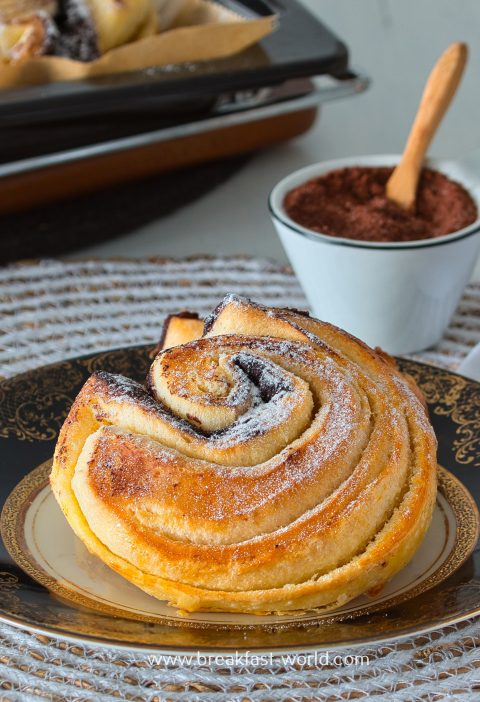
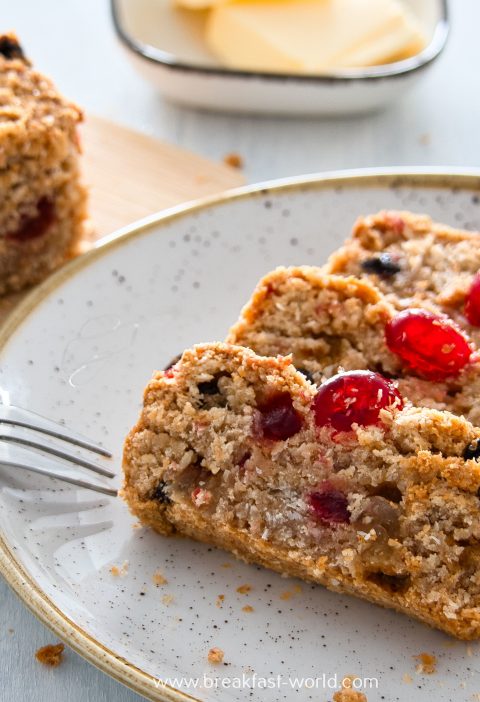
Super gut gemachte Seite mit tollen Anregungen und Infos über die verschiedensten Länder – hoffentlich folgen noch viele weitere Buchstaben!
Vielen Dank liebe Katrin für das tolle Feedback! Keine Sorge, es werden noch die restlichen ABC-Buchstaben folgen. „E“ ist gerade in Arbeit 🙂 LG Christina
Vielen Dank für das Rezept. Kann man auch etwas anderes als Bier verwenden?
LG Monika
Hallo liebe Monika, klar kannst Du etwas anderes verwenden. Wichtig ist nur das Verhältnis der Flüssigkeit zu den anderen Zutaten. Ich würde vermutlich Wasser, Malzbier oder alkoholfreies Bier verwenden. Bier gibt dem Ganzen halt einen kräftigeren Geschmack. Letztlich sind Deiner Experimentierfreude keine Grenzen gesetzt. Erlaubt ist, was schmeckt. LG Christina